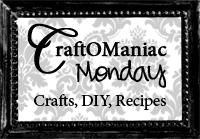I found these antique, glass shades at a roadside garage sale last summer - for $1 each! I snapped them up, thinking I would use them to convert can lights to pendants, in my kitchen.
Having seen this pendant converter in Ballard Designs, which required NO WIRING, I thought "no problem"!
The best laid plans... (although sometimes when these project go awry the most fun comes from getting ingeniously creative!)
The Ballard Designs conversion kit includes shade, etc., and was more than I needed (and expensive!).
Lowes and Home Depot both carry pendant converters (screw into the existing bulb socket, no wiring required). However, they are either for mini pendants (lighting assembly too small for my shades and not enough light) or they come with the complete kit (including shade), making it too costly.
Back to the drawing board (almost a year later) and I am sticking with my vision! So lucky that my husband is handy and
- a pendant assembly
- It needed a bulb socket large enough for the shade opening and be able to hold a full-sized bulb, to give us plenty of light in the kitchen
- an outlet converter
- Ultimately, I didn't want to hardwire an assembly, in case I decided to change back to can lights in the future (YES, I have been known to change things up around here...)
- trim to cover the can opening
Here is what we came up with:
Pendant assembly from IKEA ($5 each)
They did offer a version with white cord/white socket, but were OUT of them. I could work with this, so brought them home and prepped them for white spray paint.
Bulb socket-to-outlet converters (Lowe's $2):
Canopy kit ($5 Lowe's) and Ceiling Medallion ($7 Lowe's) to cover the can light opening.
We only needed the medallions because the canopy kit was smaller in diameter than our can light openings. The canopy kit contains hardware that installs in across the diameter of the can, so you have something to screw into. Unfortunately, the kit was narrower that our can, so my husband had to improvise and install a longer piece across the gap before installing the included hardware.
I was able to find vintage-style bulbs at Lowe's, which ended up being the most costly part of this project - $6-8 EACH, depending on style.
Now, the tricky part...the plug for the pendant assembly wouldn't fit through the hole in the canopy kit, so my hubby snipped the cord, fed it through and wired it back together. [Note: Having lost a childhood home to fire, I am squeamish when it comes to messing with electrical "stuff". While he's not an electrician, my husband assured me that the reassembly and installation into the enclosed metal can would be safe.]
I am so happy with how they turned out!
































































